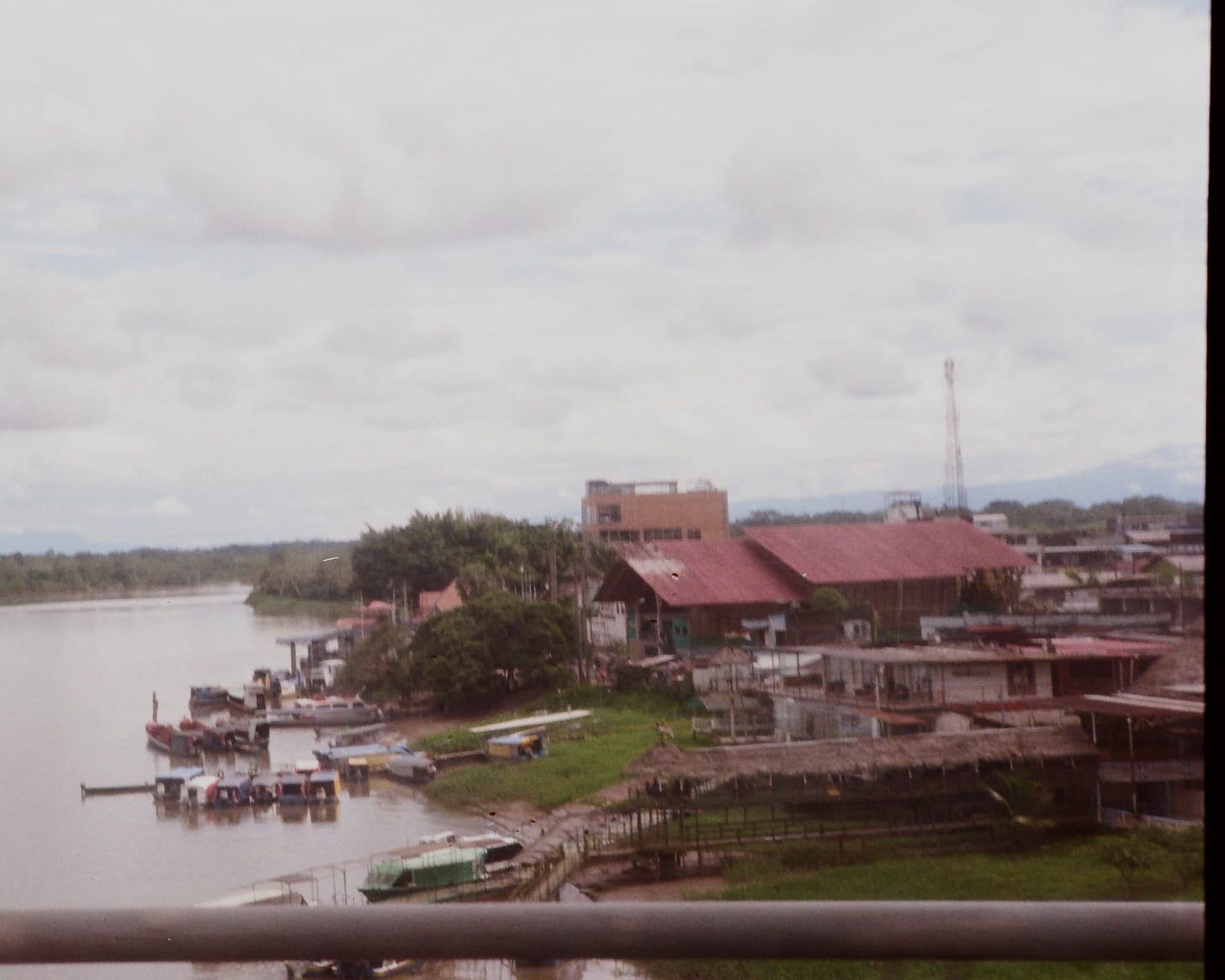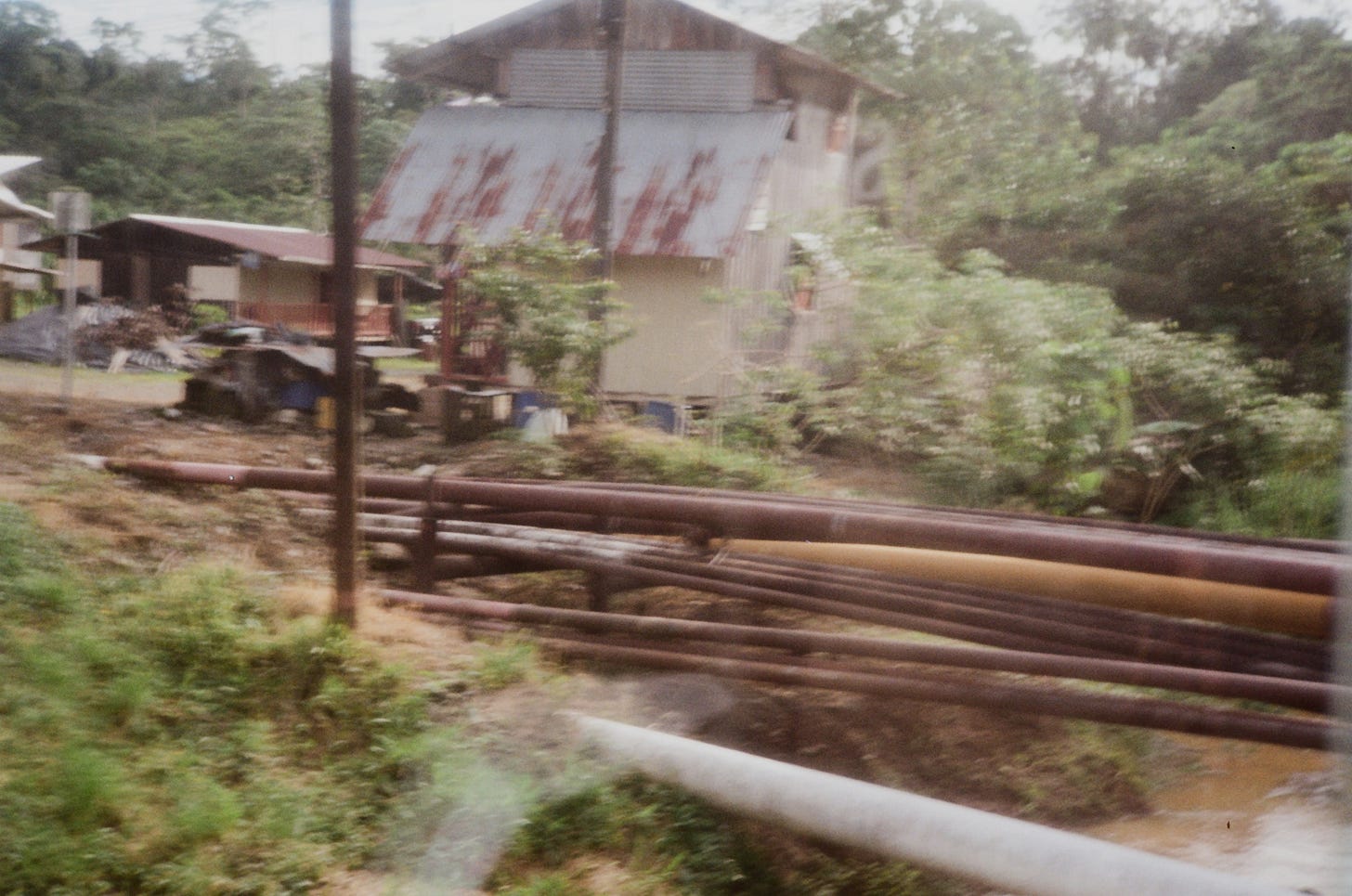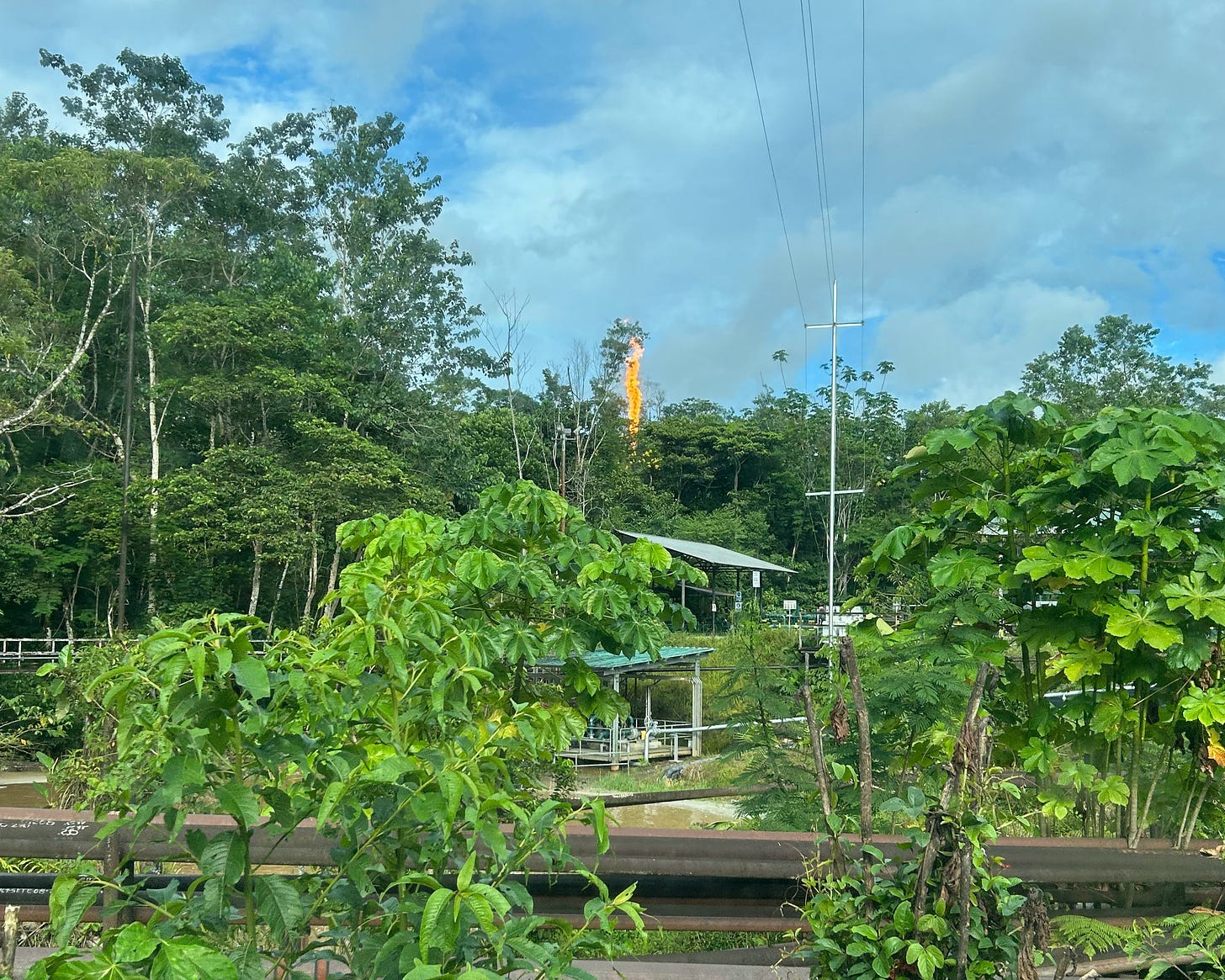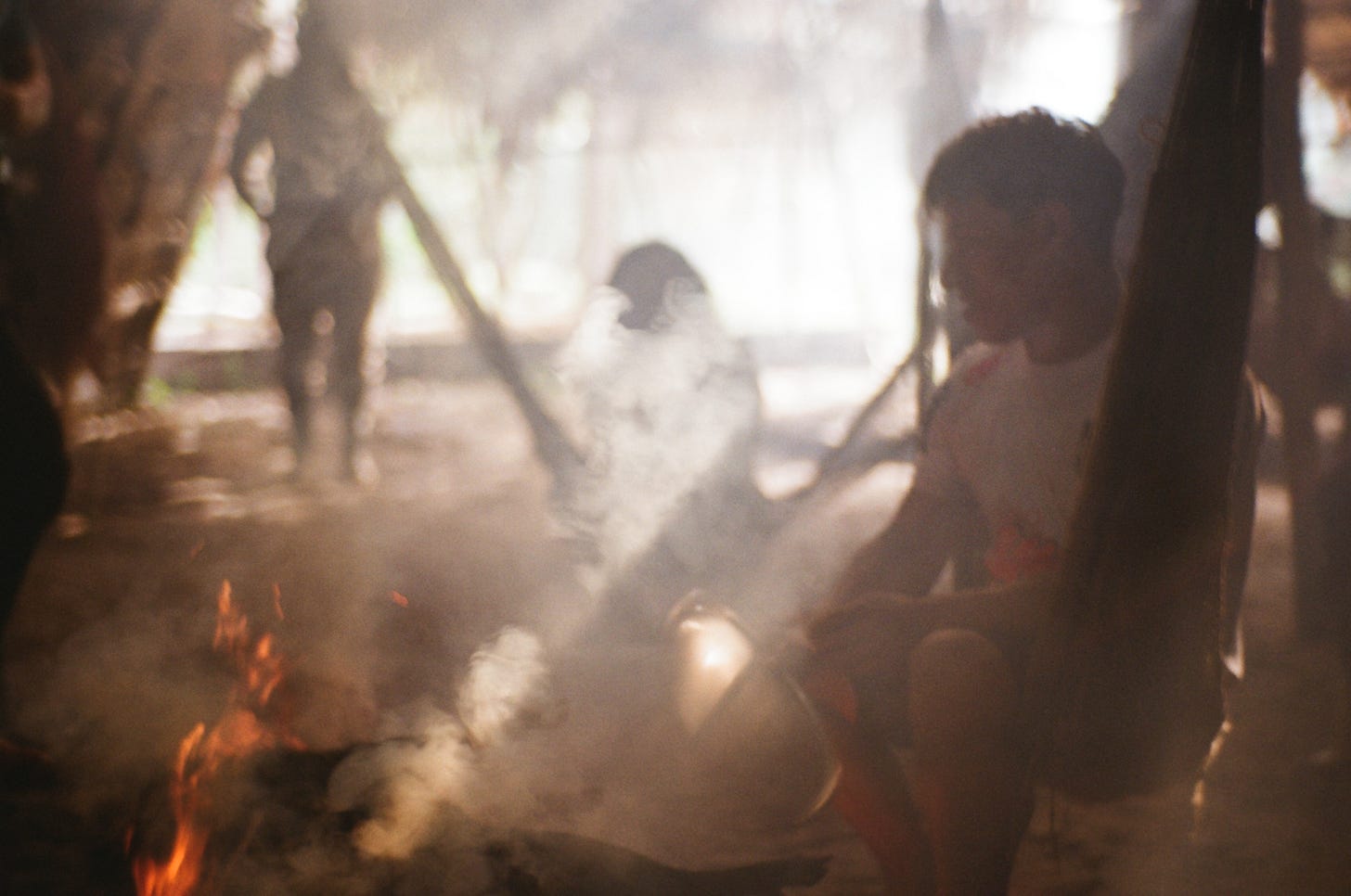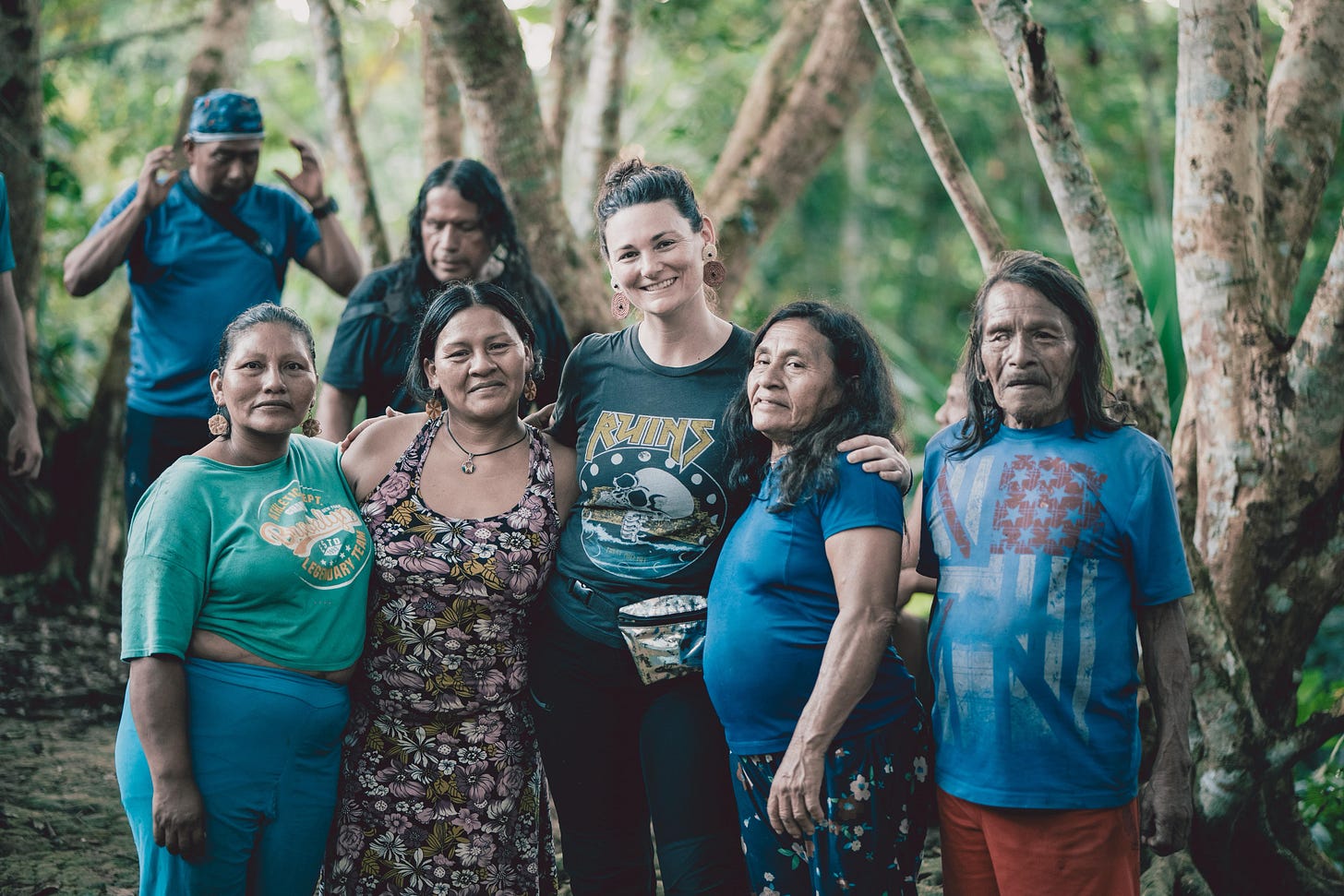Memory and Desire in the Amazon
Many people I know, including myself, travel outside our home countries during the summer. My home country happens to be the U.S., and this year, it’s been particularly hard to come back home.
One of the time-honored reasons for traveling is that it allows us to have a perspective on difference, to see that people can live vastly different lives. But we don’t just see others differently; in doing so, traveling gives us a more multi-faceted and de-centered view of the way we ourselves live. The water we’re swimming in becomes more visible.
I’ve just come back from Ecuador. I spent some time in the Andes but was most impacted by my time in the Shiripuno region of the Amazon Rainforest. The reason for this trip was that my son had just graduated high school. We decided to go on an adventure together to mark the end of his childhood years, and the entrance to his adult life. This region of Ecuador is the most biodiverse place on Earth because it is the borderland between vastly different microclimates. It presented itself to us as the perfect gateway to this next phase of both our lives.
But we didn’t choose this region solely for its magical diversity. In reality, maturing to different stages of adulthood means coming to terms with the paradox of beauty and corruption, the dual drives of life and destruction. This place — precisely because it is a site of such tremendous life — is also where some of the world’s most powerful forces of destruction are at play. And given that it is 2025, I’m not talking about anacondas.
Prior to deciding where we would travel, my son and I had both read the book We Will Be Jaguars in which a member of the Waorani nation tells the story of her people. The Oriente is their ancestral homeland. It would be impossible to think of them without their land, but she tells of how missionaries in twisted partnership with the oil industry began to lure them away from their land. Most of us know by now how the Amazonians began to realize what was happening to their livelihood and fought back in a battle that is still ongoing.
There are two ways in to the Ecuadorian rainforest — you can drive along the roads oil prospectors have built, or take a small plane to the airport constructed for identical purposes. There is no avoiding the fact that the only reason contact has been made with people living in the rainforest was to take their resources: rubber, palm, crude oil. Our group drove in. We passed through the oil boom towns of Coca and Dayuma, where an imposing Halliburton compound stands as well as large police operations. Drones, we learned when one of our party tried to fly one, are immediately grounded here. In direct contrast to the rainforest abodes that followed, these towns are ominous.
Parallel to the roads run pipelines that carry crude oil to the shore and are notorious for rupturing. Two spills happened in the weeks leading up to our visit. Behind locked fences you can regularly spot flares that have been burning natural gas into the open air for decades.
Clearly I think you should know about what’s happening in the Amazon if you don’t already because 1) the climate crisis is real, 2) what happens in the Amazon affects all of us, and 3) it is only through collective witnessing that human rights violations can be repaired. But in addition to that, what I witnessed in Ecuador has implications specific to memory.
The Waorani people have been referred to as “Aucas,” or savages. As improper as it is, sometimes it is hard to find another word than “primitive” to describe them. While I was among one clan, they roasted wild shot peccary over an open fire, starting by brushing the dead animal’s fur off as it heated. They make huts from palm leaves in their forest and build new ones after these deteriorate in a few years. Their sense of numbers and time is different than most people I know. Counting goes something like this: “one, two three, four, many.” You might be told something will take two hours when it actually takes eight. Their thinking is linked instead to the abundance and perpetuity of the natural world, and things take as long as they take. I was led to believe there is no inherent concept of a future, and with it, no sense of memory or strong emotion that gets hung up with expectation or sentimentality.
A phrase from a beloved psychoanalyst that has regularly troubled me shows up again here: “the psychoanalyst should work without memory or desire.” Bion’s idea was that when we free ourselves from expectations we can be present for what is actually happening and what lies in potential. On the one hand, I greatly appreciate this. But on the other hand — and if you’re reading this newsletter you have a pretty good sense by now — I am cautious of anyone who says we must let go of memory. Memory is often what orients us and can protect us from the dangers we’ve already encountered. What’s in it for them if we let go of memory? (Thankfully, Evan Malater has written a brilliant essay on Bion’s unconscious denial of racialized dynamics and how important it is, in fact, to use memory to orient to what was actually happening. He cites how Bion’s patient’s dreams, haunted as they were by the presence of “Negroes,” benefit from memory that they occurred during the race riots of 1967).
It would seem that the Waorani are free from memory and desire and it is this that allows them to be in a state of perpetual relationship to their land. But oh, how convenient is that formulation for those who want to take from her, dehumanizing the other to say “she won’t remember this anyway,” “she’s just a primitive.” I found no evidence that those I stayed with had no memory — they told oral histories of their people, passed knowledge between generations of how to craft weapons and homes, and knew specific calls for each monkey and bird as well as where to find them in their unique habitats. But more than that are the hundreds of Indigenous people fighting with desire to preserve the memory of their ancestors, which they say lies in the underground channels being actively corrupted by oil extraction. How can these insights, held and shared, be anything but memory and desire?
What was most striking to me was the way vengeance and violence have shifted in the Waorani since they were contacted in the 1950’s. They are now prohibited by the national Ecuadorian government from engaging in revenge killings, which were always part of their warrior identity. In the past, these killings were based on an ethical sensibility and were equal — never more — to the loss inflicted upon them, and were tolerated by the Ecuadorian government. Since being contacted in ways that continue to threaten their livelihood, however, there have been outbursts of violence that exceed their own ethical system. In one case, dozens of people were murdered. It is as if the injustices done to them have been so disproportional to what they could have imagined that their aggression had no satisfactory outlet within their own system of ethics.
It is with this paradox that I returned to the U.S., to the global state of an allied abusive power class that seeks to get what it wants from others at all costs. The fact that Waorani were contacted by airplane when they had never seen cars, bicycles, or even horses is often likened to being greeted by alien spaceships. There is math and a memory that no longer make sense. Whether one experiences the destruction of homelands, or genocide, sexual abuse rings aided by modern technology, or any number of things, the scales of how immensely harm can be perpetuated are altogether different from what we came prepared to face.
For this, we will need every ounce of memory, rooted yet further into an Earthen core than we had conscious awareness of. And we will need desire, to take us to new places when our memory can’t compute the atrocities being exponentially built before us.


